Here are some more photos of what I've been working on. Some of these are for my brother and my sister-in-law, and some are for inventory purposes. I have had a few snippets of time to work on schoolwork, although not as much as I would like. Here is what I've been working on.
0 Comments
So, I don't know how many people regularly read my blog, but those who do may have noticed that I haven't been posting much lately. That's because I've been having less and less time for school. My business is taking up a lot more time. Instead of doing surface design for an hour every other day, I now have to do it for a few hours every day. Now, according to the unschooling method, this is still school because I am learning things about surface design as I do it professionally, such as how to replicate a color I mixed in a previous batch, how to make new colors, and how to make items thick enough to be serviceable while using a fabric that's thin enough not to be a pain. I am currently working on a batch of napkins and placemats for my brother and sister-in-law, who have requested green and brown for the placemats and yellow and blue for the napkins. Additionally, they want something natural-looking. I have made mistakes and had to start again, run out of supplies, and all kinds of adventures. Also, I'm trying to focus a little more on the business side of things, such as picking up supplies, communicating with future clients about exactly what they want, recording expenses, and arranging deliveries. Here are some photos of the project, part of the way through: One day when I'm rich and famous I will have a separate studio outside my living quarters so that the bathroom can be for bathing and the bedrooms can be for sleeping. Or at least for less-messy crafts.
In addition to business, I have added a fair bit of exercise to my routine because I find that my quality of life is so much better if I do. I walk every day anyway, but I have also been adding running, pilates, and yoga. This ends up being between an hour to two hours of exercise a day. My back pain has disappeared, my concentration has improved, and my mood is so much better (doing something I love for a living doesn't hurt either). I don't know if I'll lose weight or develop amazing lung capacity or anything, but that would be nice too. I am going to be volunteering with the Museum of Contemporary Craft in the Pearl District of downtown Portland. It's my favorite gallery here. I have my volunteer orientation tonight. I'm not sure how often I'll be volunteering, but it will be nice to get out more often and hang with people who love art, while supporting my favorite gallery. My other volunteer thing is that I seem to have become a chaplain with Occupy Portland. I didn't intend to do this, but like most things with the movement, it just kind of happened organically. Really, this is very nice because I got my degree in Religious Studies because I wanted to help the world, and the mainline church hasn't really needed or wanted to use my education. Here are some people who don't care that I haven't gotten my master's degree or gone through discernment committees, they just need some help. So I'm happy to be useful in that way. Hopefully, I'll have a little more time for school soon and I can keep everyone posted on what I've learned. In the meantime, look out for more progress reports on my business projects! Day 21 took place over a number of days, as I've been sick with a nasty cold recently and haven't always had the energy I needed to do all my work. But I chipped away at it and this is the result. The information I am presenting is not in the order that I did it, but rather the order I can keep it all straight in my head. My warm-up was to "listen to what nature was telling me". The book even suggested that I consult a book about nature omens. Now, I don't actually believe that there is a such thing as a nature omen, so I had to make of it what I would. It did occur to me that I don't spend a lot of time just observing nature and appreciating it. The book suggested that I do a visual journal entry about it, but I didn't even know where to begin, so I decided to go out with my camera. I figure that photography can be a kind of a journal, and I am eager to improve my photography. So I went for a walk with my camera and took pictures of nature changing for fall. I particularly liked the red red leaves and the squirrels that were so happy with their acorns. I watched a fantastic podcast about the Jawaja leather workers of India. They were doing a presentation via Skype, with a translator. Theirs was a very inspiring story. Thirty years ago, they were so low-caste that they weren't allowed to draw water from most of the wells. The traditional way of leather working in India is to scavenge for dead cows, as you're not allowed to kill a cow. So this was a despised profession. The leather workers were very poor. Their elders decided to ban the scavenging of dead cows and work on shoes (feet are kind of taboo in India) in order to raise their status. This had the unintended effect of making it even more difficult financially for the leather workers, as they had to buy processed leather, and couldn't sell as much. Eventually, they decided that they had had enough and began to work with design schools and craft councils. They helped develop products that could be marketed overseas. They began to sell to Maiwa and made enough money that they could eat twice a day (they were eating once every two days before that) and own houses. Since the presentation, customers have been so interested in the leather work that they have had to carry extra stock. Their bags and purses are very popular and they always have a large selection on their website. I was very happy to hear about the improvement of their lives and I hope they become even more prosperous. Their social standing in the village has also improved and now they are allowed to draw from all the wells.
I have been working on a drawing of crumpled paper. This is going to take me a few days., I think. It requires a lot of concentration and patience. So far, I think it looks like cloth, but we will see how it looks when I am finished. I will post pictures as I have them. I watched more podcasts on the Art of Photography. The first one I watched was about scanning negatives, and it reminded me of my first full-time job as a digital scanner. It was a good refresher, and I learned about adjusting the histogram more finely than I did at work to improve detail in the photo. The next one I watched was on dynamic range, which is the range of values in a photo. Ideally there should be a wide range of values in order to show the most detail, unless you are doing high contrast on purpose. You can adjust the values in the computer to improve the range. The next one I watched was pretty cool, on tethered shooting. This is where you set up your camera to load pictures directly onto the computer so you can tell if they are exactly as you want them (it can be hard to tell on that little screen). That way you can adjust your settings to tweak the photo. This technique is used especially for catalogue photos. The final one that I watched was on time-lapse photography. It's very interesting because you have to set your camera up to take these photos at set intervals and then not touch it. You can't adjust the lighting levels or anything or it will look strange. There are programs that you can get for your computer that will play the time-lapse and you can make a little video. In my design book, I reviewed the chapters on shape and texture. In surface design, I am proud to say that I have my bolt of cloth! I have spent the last couple of days preparing the cloth and have cut the pieces for the order for my brother. I have also been working on dyeing some other pieces that I was experimenting on, and I am washing out those pieces now. It doesn't sound like I've done a lot but preparing an entire bolt of cloth takes a long time! Well, I'm feeling pretty sick today, so I'm taking a day off. However, I did stuff yesterday so here's my report. I started out with a podcast. It was by an artist who talked about her commissions. I am doing mostly commissions these days, so I was interested in what she had to say. She sort of built her own fiber art education, since she had studied ceramics in her undergrad and didn't have time to go back and study fibers. She did this by working in a theater costume department. She specializes in wearable art that can be worn by everyday people, not just displayed in a museum. She liked working on commission because she enjoyed the challenge of trying to meet her clients' needs while still being creative. In some cases she has even used a different medium, if fiber wouldn't be suitable. That's something I have to work on: I can do what I can do but if someone asks for something at all outside of that, I get befuddled and am unable to do it. She also had an interesting payment structure, where she collected the payment in thirds: one for the initial materials, one mid-project, and one on completion. I am not sure why you would need the mid-project collection but she said that it was what worked best for her. She also talked about how temperamental her indigo was: you have to harvest and use it at the right time or it won't work at all. One year she missed harvesting it before the frost, and the frost turned all her plants blue. She said it was stunningly beautiful and didn't seem at all disappointed that her crop was lost! Next, I did a warm-up. (Crazy, podcast before the warm-up!) The assignment was to research cultural symbols of a culture that spoke to you. I have been interested in (obsessed with) Indian culture since I was about 14 years old. Now, admittedly, most of this obsession has revolved around food. I went through my Bollywood phase and my wanting-to-wear-a-sari phase and my Ravi Shankar phase and even courted the idea of becoming Hindu for a while, but those were all things I passed through. Food has been the constant, especially vegetarian food (I am beginning to branch out into meat now). So there were actually a number of symbols that I didn't know about, or at least didn't know the importance of. I got my information here. My favorite symbols were the Deepam (a little butter lamp used for worship), the coconut, and the lotus. The Deepam is said to remove impurities, the coconut to bring prosperity, and the lotus, among other things, represents detachment (I believe that's in the Buddhist sense). I reviewed line in my design book. I looked at measure, type, direction, location, character, as well as line and shape, line and value, texture, color, spacial characteristics, and representation and expression. Learn more about line here and here. Finally, I did a drawing of a little woven box that I got some spices in. I didn't get a chance to do surface design yesterday, because the glue resist I had applied wasn't dry yet. If I can rustle up the energy to do it today, I will, but so far things aren't looking so good. I also have received a deposit to go purchase supplies for my next commission, but I think I'm too sick today to go out and get it! Hopefully I will feel better tomorrow and I can hop to it.
I sort of did this day over the span of two days. Yesterday was a holiday (Columbus Day in the US and Thanksgiving in Canada) so I only did a little work. Also, I'm having trouble with my productivity lately. I am learning stuff but not at the rate I would like. So I will see if I can ramp things up a bit over the coming week. I listened to two podcasts yesterday. The first one was about a Shibori artist from the UK. She worked primarily with Indigo, but also with iron rust. She does beautiful, intricate shibori work, which leaves me in awe. She takes quite a lot of time very carefully stitching, dipping multiple times in the dye vat, and then carefully undoing the stitching. You can see a little of her work and the kits she sells at http://www.callishibori.co.uk/. The next podcast I listened to was by a textile designer-turned cultural anthropologist who had a little money that would either let her work in her studio for six months or allow her to travel to India to study textiles. She didn't know which one she would rather do, so she flipped a coin. The coin "chose" the trip to India. She has traveled all over India, and has specialized in studying the block printers of the Kutch region in Gujarat. She specifically studied ajrakh printing. She absolutely loves traveling in India and has arranged many exhibits in the West. For business study, I watched some more of the Art of Photography episodes. The episodes I watched were all about developing film. I won't be doing that anytime soon, but it was a fascinating process to watch. The developing fluids were poured into a little light-proof case that held the film. There were three different fluids, but I can't remember what they all were. I wonder if photographers today miss this sort of process, or if they find Photoshop gives them better control. In design, I did a review of the chapter on form, doing sketches as I went. I looked at variety, balance, and dominance. It was a good review to make sure I understood the terms. I will have to give this book back to the library soon so I need to finish my review to make sure I understand all the concepts. Finally, I finished off some bookmarks, as well as a sample of a project that I am doing for my brother and sister-in-law. I worked on a few other items as well, applying the glue resist, stitching embroidery, and the tedious work of ironing everything. I find that working with cloth is half tedium and half creativity. It's a bit like cooking, where you spend half your time creating and half your time cleaning up or doing repetitive chopping or something. When I put on some music and daydream, the tedious stuff is not so bad, and I can get excited that it will lead to creative stuff. Anyways, I took some photos of my finished objects. Today I finished listening to the roundtable discussion on the working traveler. The travelers were asked what their favorite places were to visit, and most of them had difficulty answering, because each place was so different, and a place could change so much in a matter of a few years. They also talked about how they financed their trips. It was very interesting, because none of them were rich, but they rearranged their finances so that they could travel. It was the most important thing to them, so it was their priority. They talked very little about fiber arts at this stage, but it was interesting to hear about how they managed to travel. I hope to travel more in the future (when I have finances to rearrange!) but I don't think it will be a priority for me. I drew some shells. I am pretty happy with how they turned out. I loved all their little ridges. I worked on rinsing out my brown dyes from yesterday. I haven't finished rinsing them yet so I'm not sure how they've turned out. I also worked on painting with some orange dye, and doing a pole wrap and a tie-dye with the leftover dyes. I don't have pictures yet but I will post them as soon as I have them.
Short post today! Hope you enjoyed! Yesterday, I had a great experience with my friend Amber. We sort of had a skills-exchange party. Amber showed me some things about sewing and I showed her some things about knitting. We had a great day. I made a pillowcase, which doesn't actually fit any of our pillows. I know how to do it now though. Not difficult at all. From soup to nuts I think it took me under an hour. We also worked on a skirt (just the muslin, I don't intend to wear it). Anyways, I had such problems with the pattern and the book that I think I am going to quit this one and make something else instead. I have another book that the pillow pattern comes from, which might be a better fit for me. Also, Amber left some patterns for me to try, so I'm going to give those a whirl. I hope we can have another skills exchange party again soon! For my business study today, I watched four more episodes on The Art of Photography. The first episode was on filters, which are more appropriate for film cameras than digital. With digital, it is more effective to use Photoshop than a filter. The second episode was on metering without a light meter, which involved changing the aperture and the f-stop. I also learned that lots of photographers take slightly darker and lighter photos to make sure that at least one turns out as they had hoped. The third was on a photographer who put together a book called The Americans, and had sort of a photojournalistic style. Finally, the last one was about composition, and there were many elements to it other than the rule of thirds. One thing that stood out was the use of triangles, often creating points with eyes. Most of these triangles were right-angle triangles. Another think I liked was the use of curves in photos, usually on one of the stress points created by the thirds.
I finished the last chapter in my design book, and will be going back to invent exercises for each chapter to make sure that I have grasped the concepts. This last chapter was on time and motion. It was a pretty short pattern. Motions on the picture frame are intended to slow down the gaze of the viewer, who will usually try to look at something quickly. Motion can be implied by line direction or shape position. The sequencing of images gave rise to animation and moving pictures. Some artists, such as the Cubists, tried to give the impression of moving around the subject by showing multiple viewpoints. This can be seen in Cezanne's works, where parts of the table don't line up and where some objects are viewed head-on and others are viewed from above. Sometimes images are superimposed or blurred to give the impression of moving around the subject or to suggest motion. Think of cartoons in which the character runs, and his feet turn into multiple feet moving very quickly. The chapter has a short history of moving pictures, which I won't get into here, and also discusses video artists. Additionally, computers and multimedia can be used in art now. Motion can also be implied in three dimensional work, again by showing multiple viewpoints. Additionally, there is kinetic art, which is usually sculpture that actually moves. In dyeing today, I had an interesting experiment: trying to make brown. Theoretically, brown should be dark orange. I don't have black to add to orange (which I can make with red and yellow). What I did was to mix up some golden yellow, which is close to orange, and added a tiny bit of blue and a tinier bit of red. The dye looked pretty brown but it seemed a bit on the orange side when I painted it on. I won't know exactly what the color will be until I've washed out the dye. I am hoping it will be brown, but I can keep mixing if not. I didn't saturate my cloth with dye so I'm hoping I can dye it once more if it's not brown enough. Today, I started with a warm-up to research an artist's life. The artist suggested was Frida Kahlo, which suited me fine. I'm not a Frida Kahlo fanatic, but I do like her work. Anyway, I discovered that the movie pretty much told it like it was. There were a few things in there that I didn't believe, like that she had an affair with Trotsky. Well, at least according to Wikipedia (how academically rigorous, I know) it's all true. She really was bisexual and her husband, Diego Rivera, really did have an affair with her sister. She wore long skirts because she had polio when she was a child and it deformed one of her legs. The bus accident she experienced as a teenager caused her pain throughout her life and she was frequently bedridden because of it. She became an artist after the accident (she was self-taught) and painted until her death, at age 47. I listened to the next part of the roundtable discussion that I have been listening to lately. It was a response to audience questions, and there wasn't too much pertaining to fiber art, but more to do with traveling. They had some real horror stories about some of their travels! But there were a few important nuggets to learn, such as that unprocessed fiber isn't allowed through customs in the United States (good to know, in case I visit some sheep farms) and that there are in the world warehouses full of exquisite embroidered and woven textiles that get cut up for use in patchwork that is sold to westerners. Also, there was a plea for people to buy fewer clothes and make sure the clothes that they do buy are fair trade and, if cotton, organic, and made of natural fibers, because there is such waste in the world of textiles. This jives with my own thoughts about how people treat clothing. Some people throw clothing out. Did you know it can be reused, even if it's not wearable anymore? Old clothes are used for rags, new garments, patchwork, quilting, and rugmaking. Often clothing can be saved with a patch or some darning or a good stain remover. So think about that next time you are tempted to throw clothing away! I drew a vase. Not much to say about it. My drawing was a little better than last time. I wonder how much of that is because of the practice of the last one and how much it was because my ceramic was matte instead of shiny. My vase sides are getting more even. Those of you who do not draw or paint, you don't know how difficult it is to get even sides on vases and bottles. Even arches are difficult. Usually they come out lopsided. This one is considerably less lopsided than my usual vase drawings, so I am happy about that. Yesterday, I washed out all my cloths. I discovered a new technique to getting the dye out without bending over it for an hour: let it soak in several changes of hot water, for about half an hour or so at a time. It worked wonderfully and I was a lot less cranky than I usually am with the process. Today I ironed them and added a glue resist to most of them. I am working on a sample for my brother and sister-in-law as well as some bookmarks. I prepared some more bookmarks for dyeing, but I didn't have enough to bother with making up some dye today. You have to use all the dye in the same session that you make it, or it won't work, so it's not worth it unless you are actually going to use it all. I would only need about a quarter of a recipe, which is too fiddly to bother with. When the resists are dry on the rest of them I will dye them all together. I also designed this stamp to block print with. I modeled it on an oak leaf.
|
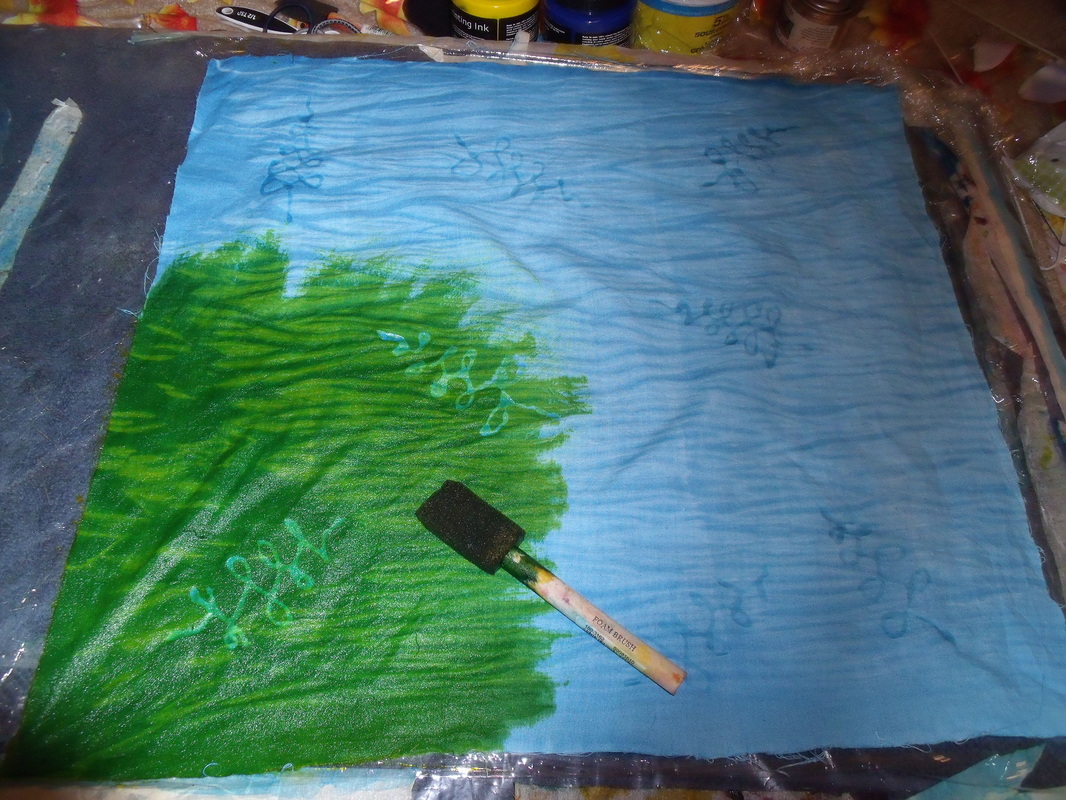

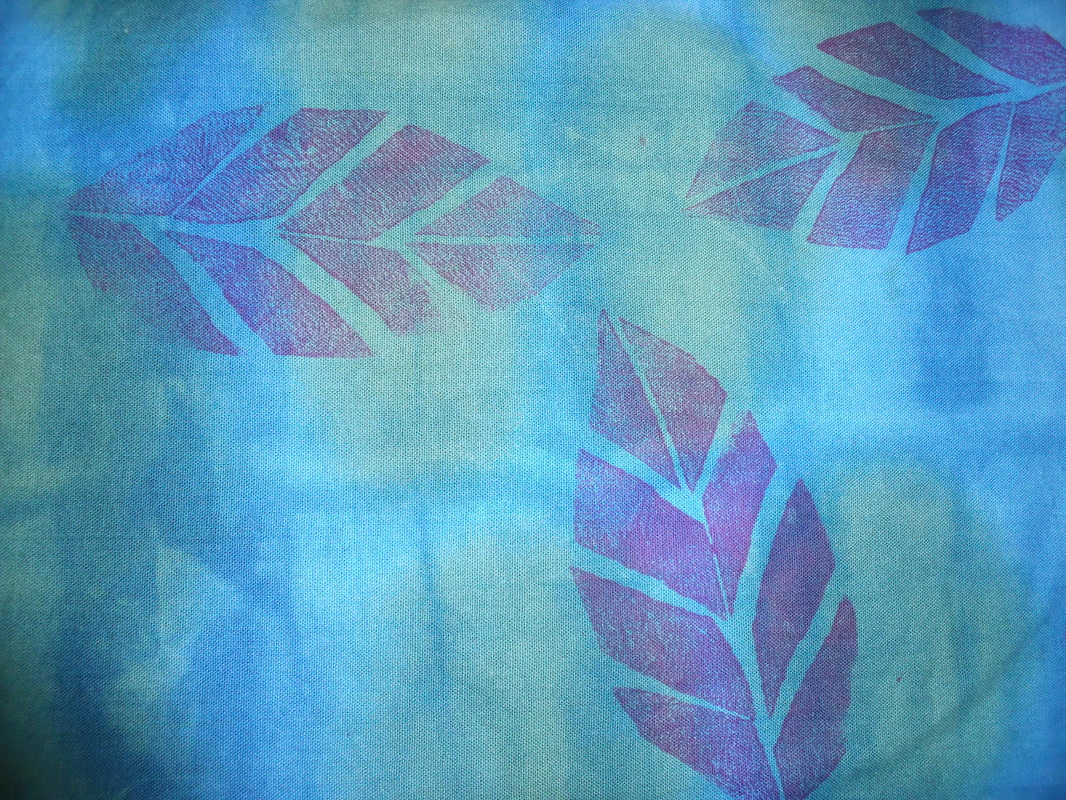
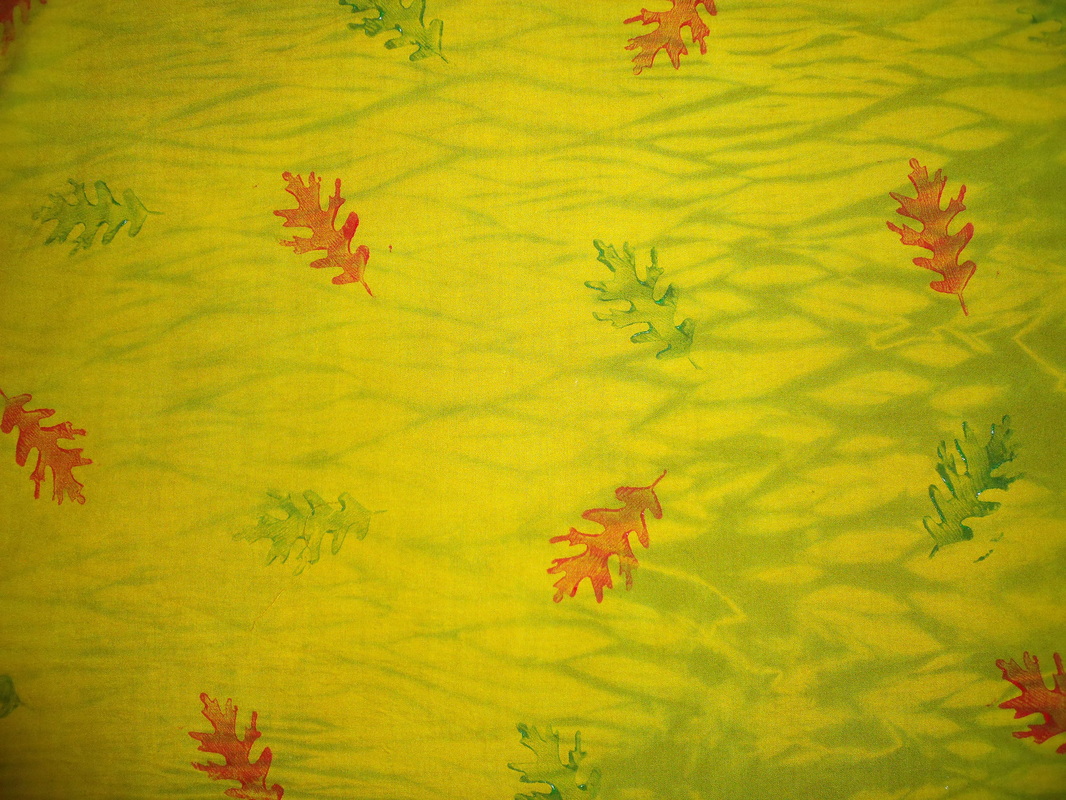

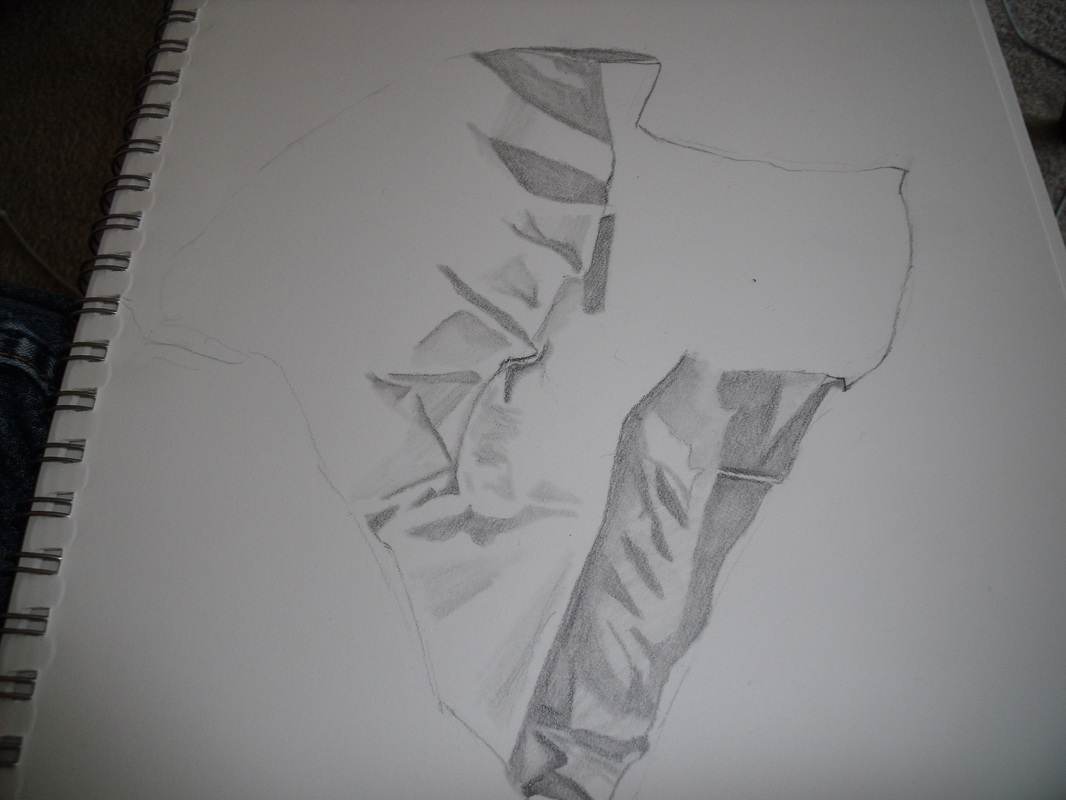

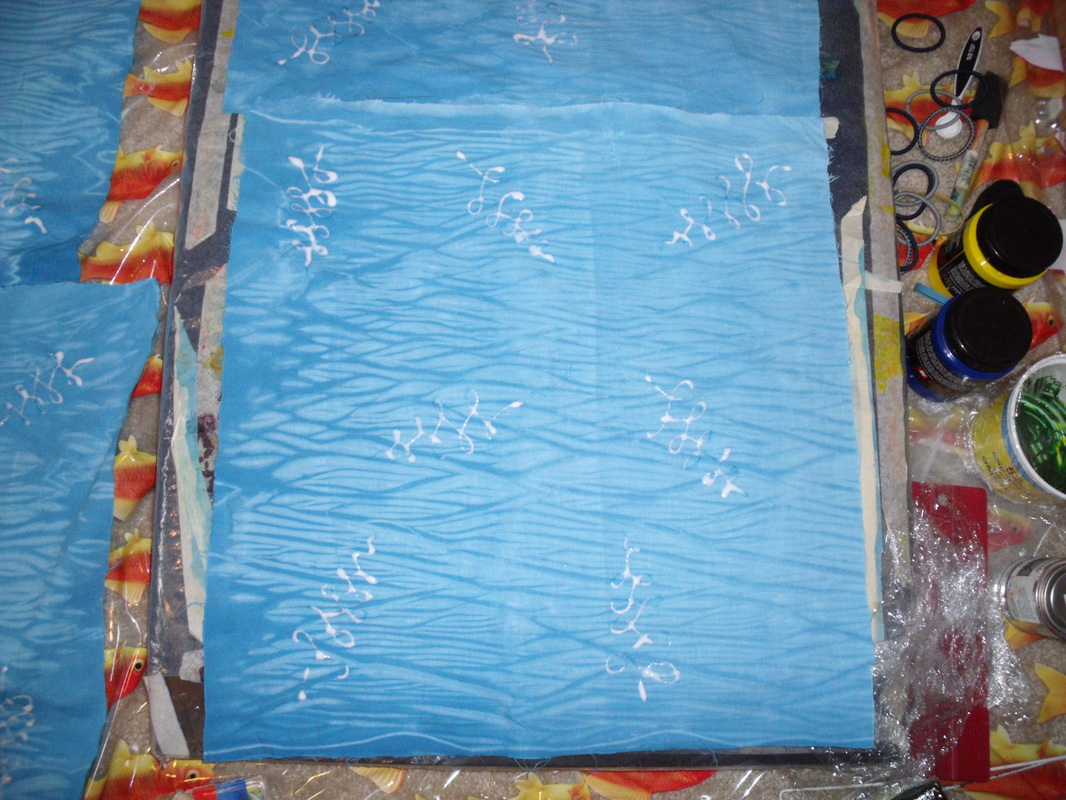
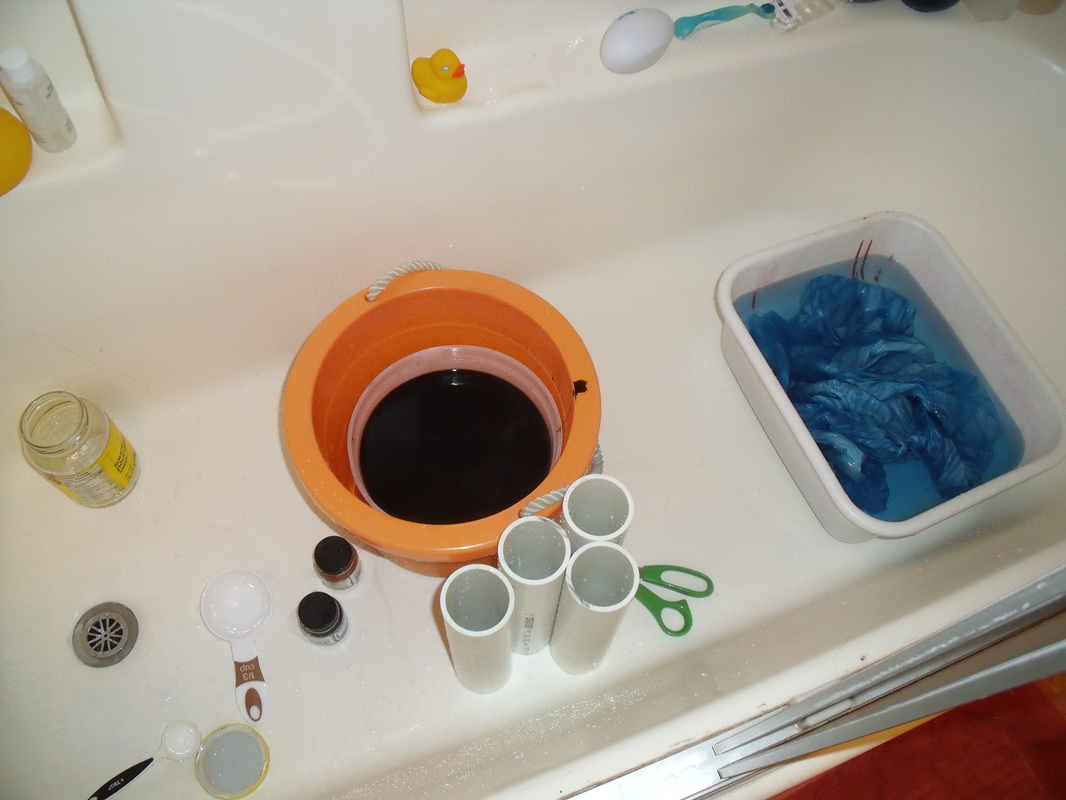
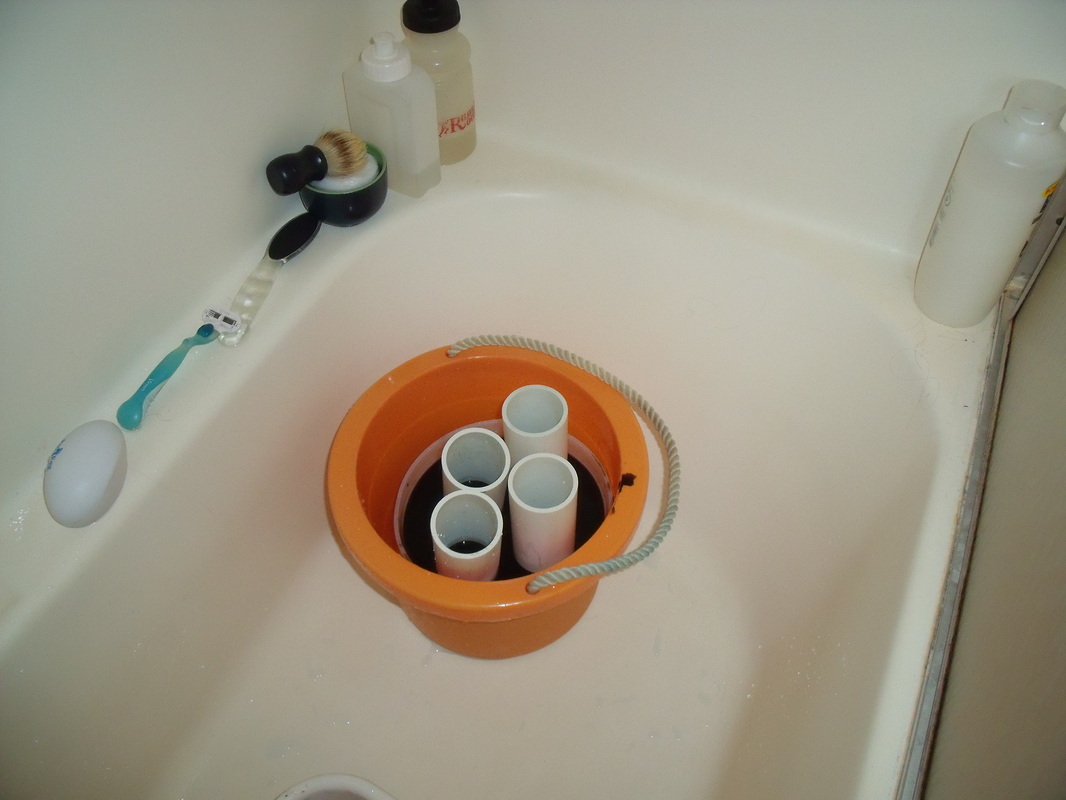
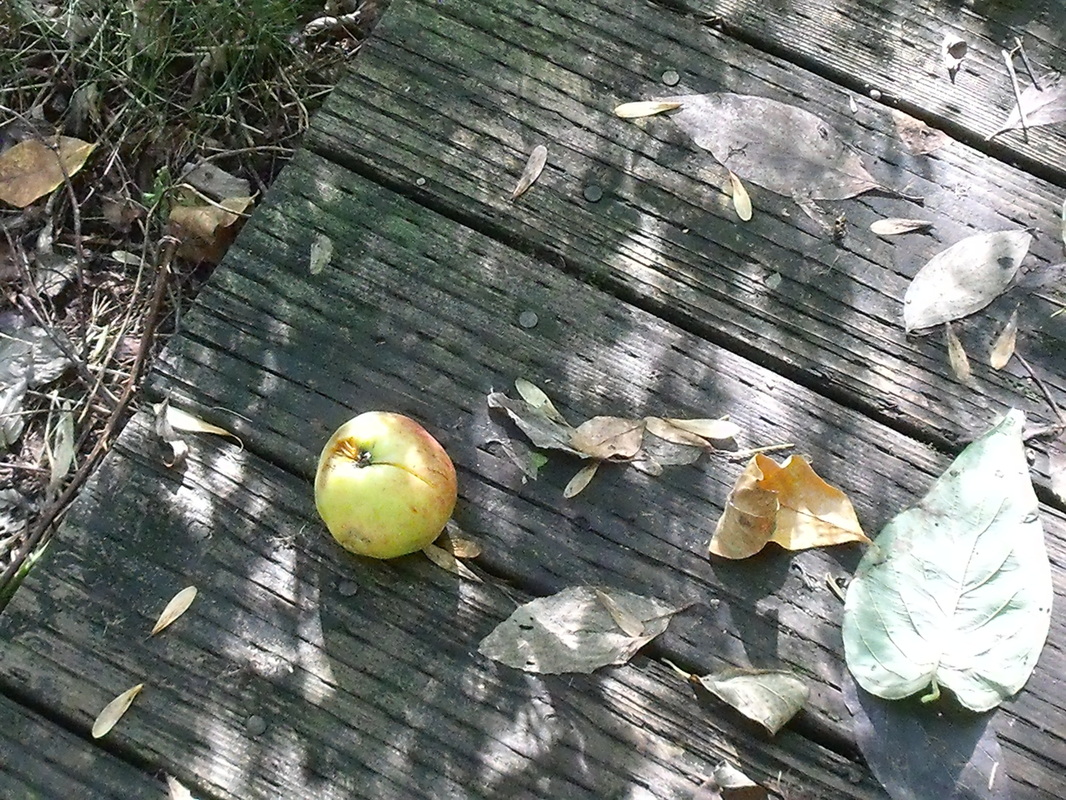
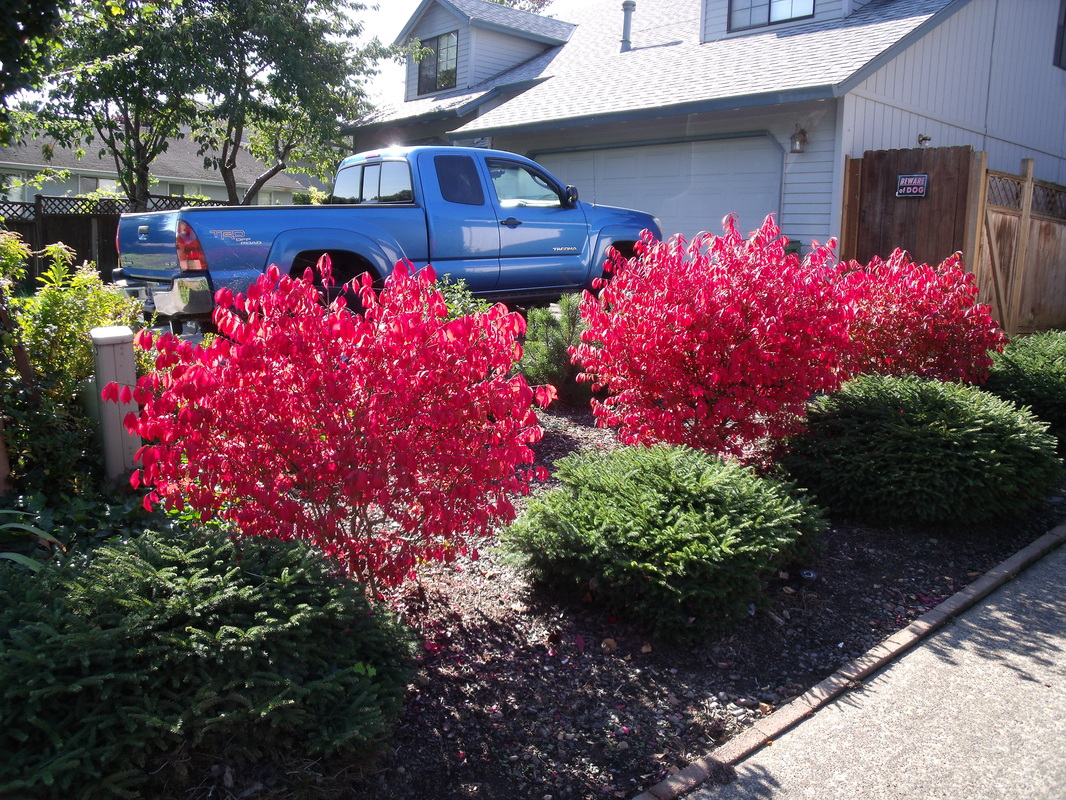
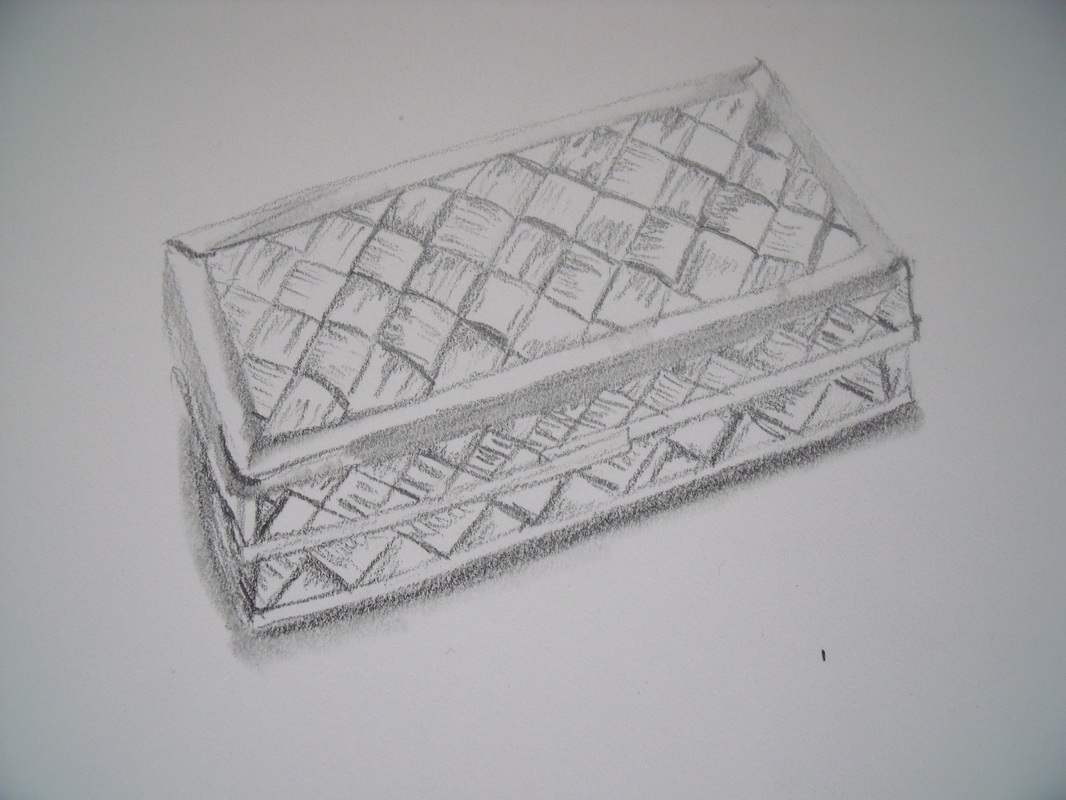
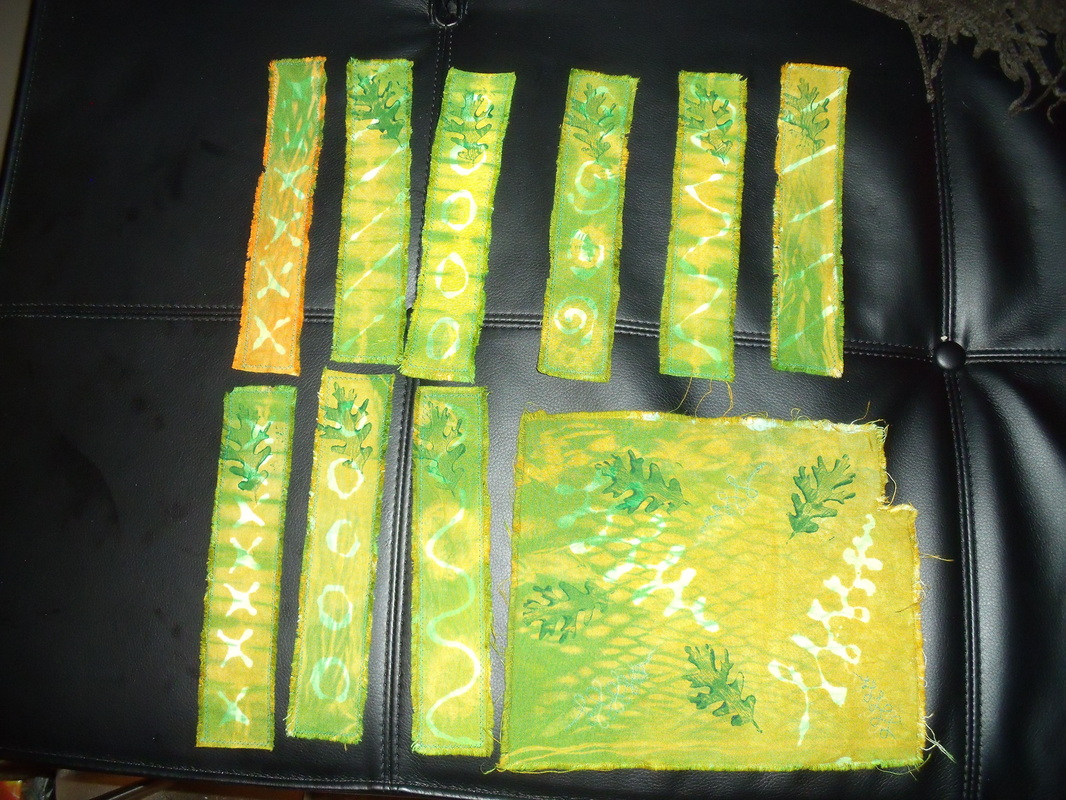

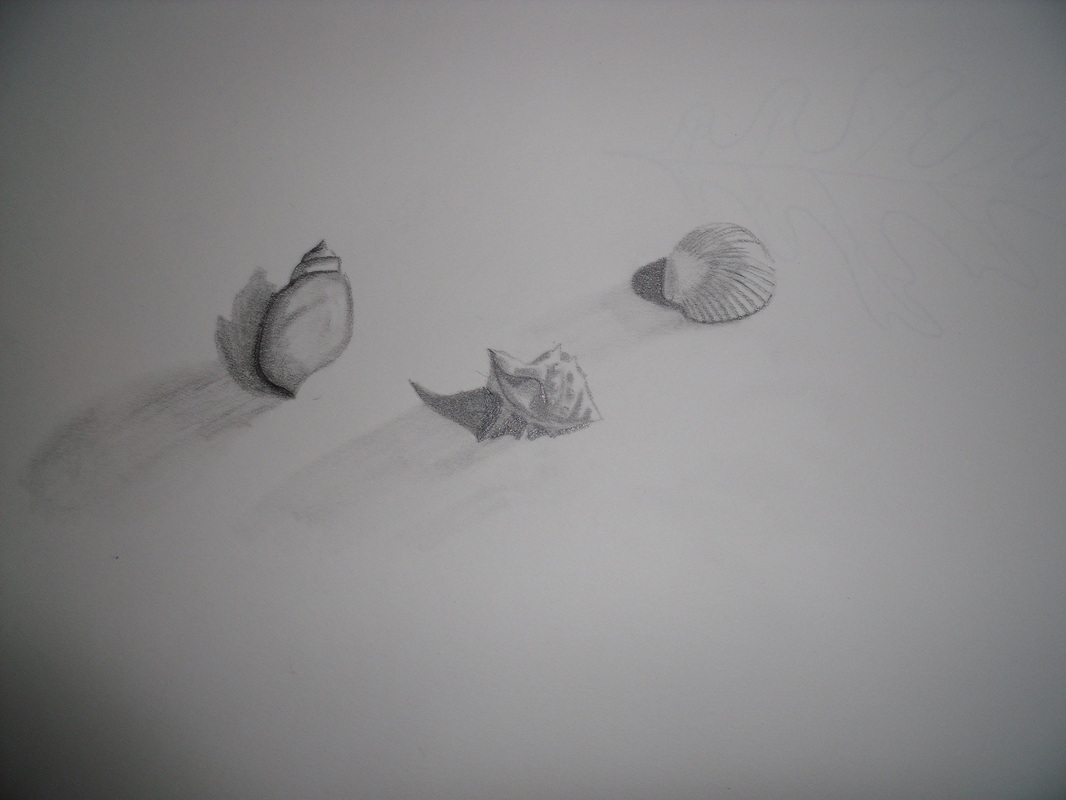
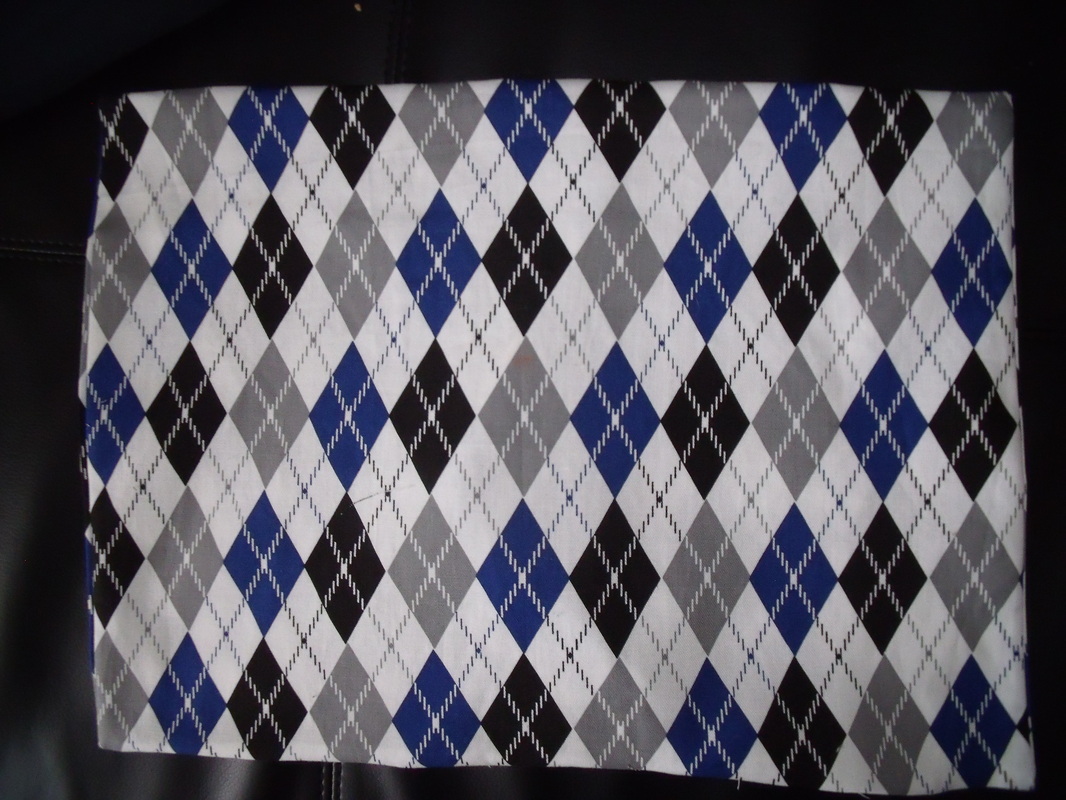

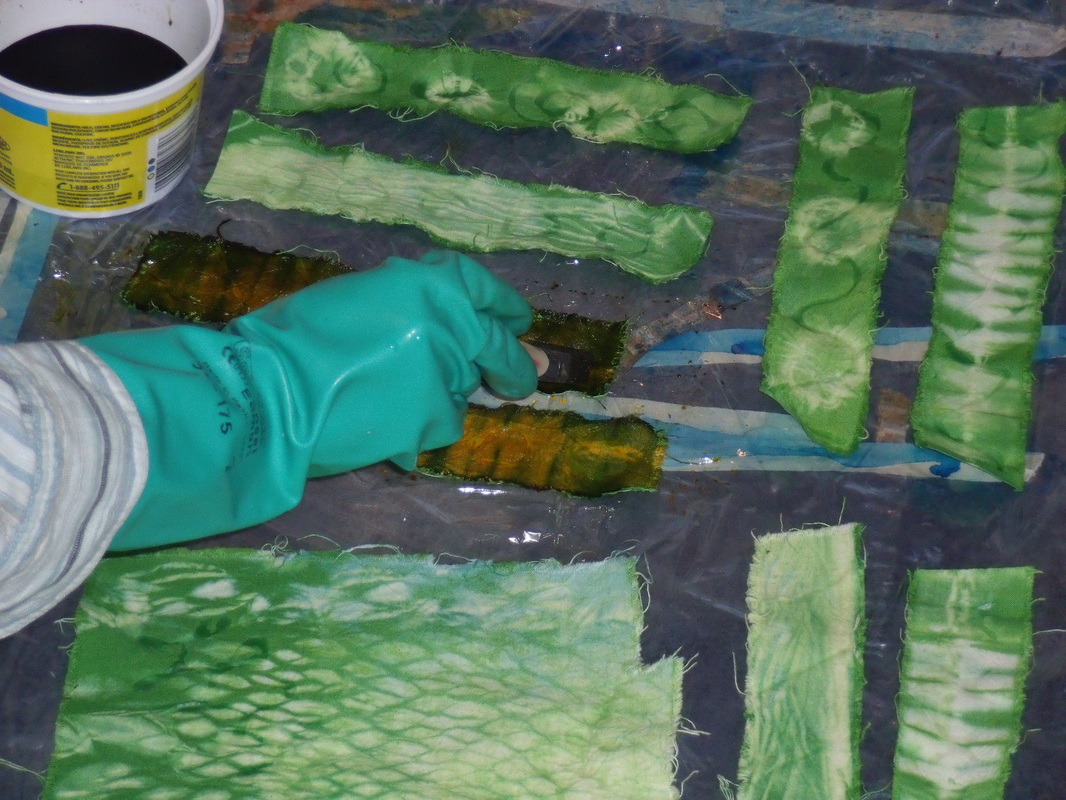
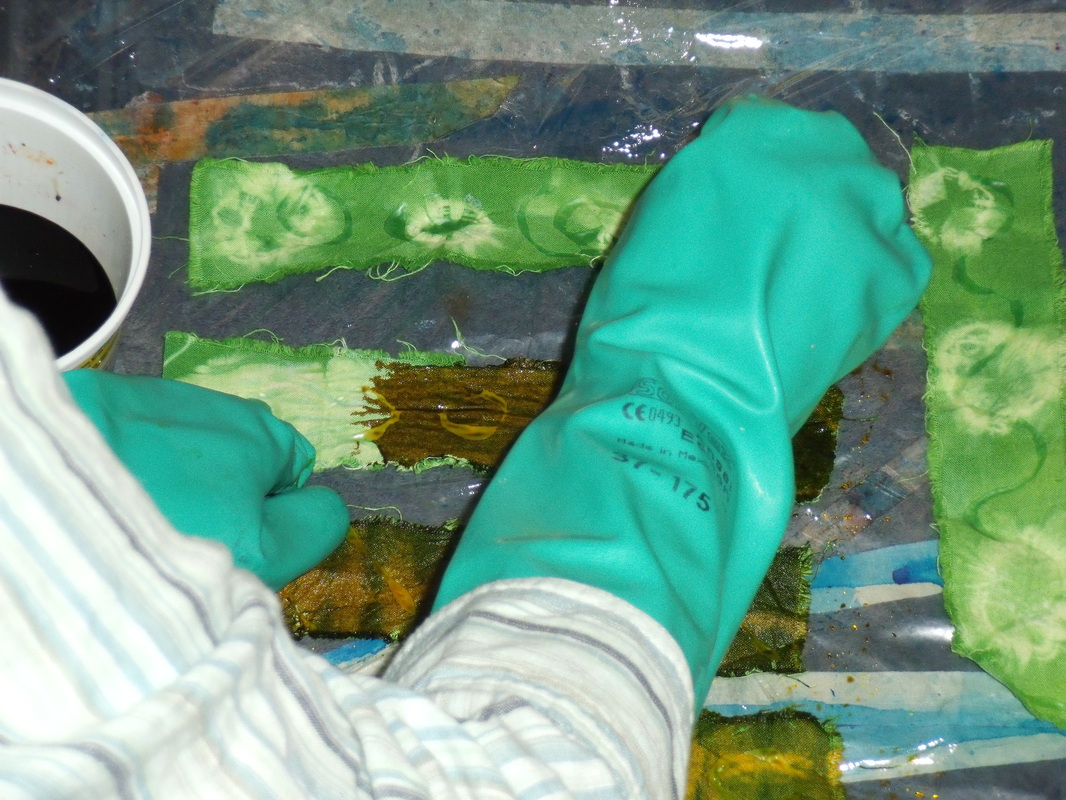
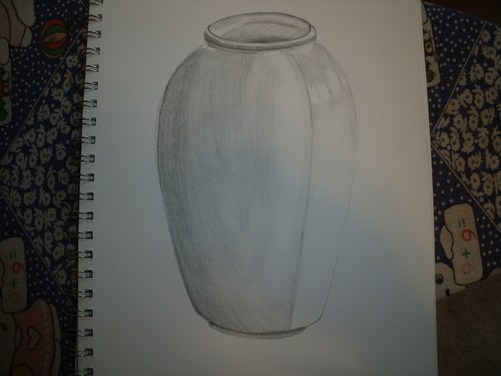


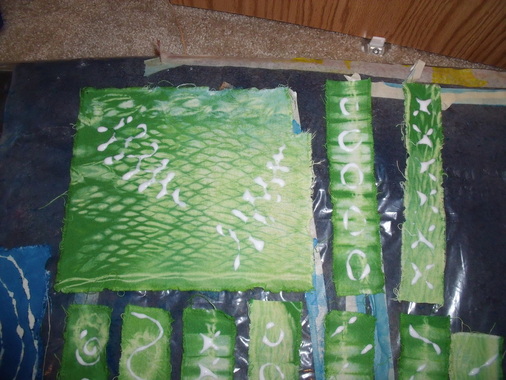


 RSS Feed
RSS Feed
